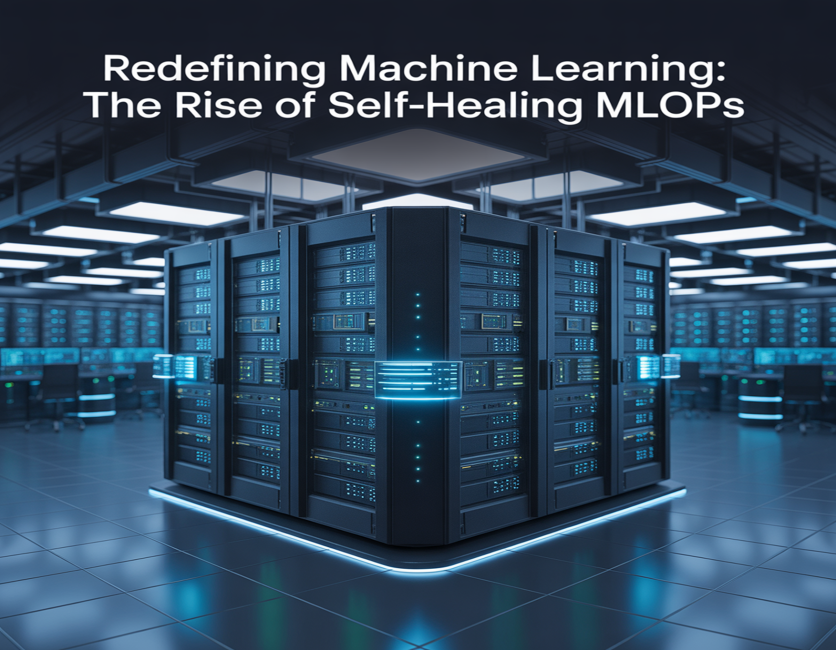
In an era where artificial intelligence drives critical business decisions, Nikhil Dodda emphasizes that maintaining machine learning model performance is as crucial as building them. Model deployment, once considered the pinnacle of innovation, now marks the beginning of a continuous pursuit of reliability and adaptability. As real-world data shifts, models naturally degrade, revealing the limits of traditional, manually maintained systems. The emergence of autonomous MLOps transforms this challenge, creating adaptive AI pipelines capable of detecting, diagnosing, and repairing issues in real time. These intelligent systems not only safeguard accuracy and stability but also set a new benchmark for resilience in enterprise AI.
From Reactive to Autonomous: A Paradigm Shift
Most organizations still rely on reactive strategies. When performance drops, human teams scramble to retrain models, fix pipelines, and restore service levels, a slow, resource-intensive, and error-prone process. As the number of deployed models grows, maintenance becomes unmanageable.
Dodda's framework replaces this cycle with full automation. The framework introduces drift detection algorithms that continuously scan for subtle statistical shifts in input data and model outputs. Once anomalies appear, automated workflows decide whether to normalize data, retrain the model, or revert to a previous version, all without human approval. This automation ensures uninterrupted performance and reduces the technical debt that plagues traditional AI systems.
Intelligent Eyes on Data: Real-Time Drift Detection
The framework's multi-layered approach to drift detection distinguishes it from conventional systems. Instead of relying on static thresholds, it leverages advanced statistical methods. Feature-level analysis employs the Kolmogorov–Smirnov test, Population Stability Index, and Kernel Density Estimation to detect deviations in feature behavior.
Multivariate techniques, including Principal Component Analysis and Maximum Mean Discrepancy, uncover complex data relationships invisible to simpler methods. Temporal analysis then separates normal seasonal changes from true anomalies using cumulative-sum control charts and time-series decomposition. These capabilities enable early detection of performance issues, often weeks before they impact metrics.
Monitoring with Meaning: Adaptive Intelligence
Beyond detection, adaptive AI pipelines redefine what monitoring means. Statistical process control techniques such as dynamically tuned Shewhart and EWMA charts track model accuracy and error trends in real time. Adaptive thresholds evolve alongside business cycles and tolerances, minimizing false alerts.
Hierarchical segmentation further enhances interpretability by analyzing model behavior across dimensions like geography or product category. This layered intelligence enables organizations to target remediation efforts based on business impact, not just statistical deviation.
Automated Healing: The Brain of the System
The "healing" process unfolds through tiered remediation protocols. For minor issues, data normalization aligns incoming data with training distributions. For moderate drift, incremental learning enables models to adapt without full retraining. Severe drift triggers complete retraining with optimized data windows and hyperparameter tuning.
Deployment automation ensures safe rollouts using canary and shadow deployment patterns. Statistical validation guarantees rollback if performance declines, closing the loop between detection, correction, and verification.
Building the Backbone: Infrastructure and Governance
Behind the intelligence lies a robust infrastructure. Containerized environments guarantee consistency from development to production, while CI/CD pipelines automate testing and deployment. Versioned datasets and model artifacts ensure full traceability and audit readiness.
Governance remains equally vital. The framework establishes clear audit trails, explainability reports, and thresholds for when automation hands control back to humans. This balance preserves accountability while enabling near-complete autonomy.
The Future Is Self-Sustaining
The future of machine learning rests on resilience. As models power increasingly critical applications from healthcare to logistics, manual maintenance cannot keep pace. The next evolution will see reinforcement learning agents discovering optimal remediation strategies, automated feature engineering improving adaptability, and cross-model awareness allowing systems to share corrective insights.
Explainable AI will remain central, clarifying when and why interventions occur, strengthening trust between autonomous systems and their human counterparts. As these technologies mature, adaptive AI pipelines will evolve from innovative concepts into essential infrastructure.
Conclusion
Nikhil Dodda's work underscores a new era in AI reliability, one where models not only predict but autonomously preserve their own performance.

-
 C114 Communication Network
C114 Communication Network -
 Communication Home
Communication Home


